In the Beginning
I was indeed on my own and I felt it. The isolation of being different and living your beliefs is by its very nature usually, mostly, isolating. People, others, don’t feel like you do. Not really. It’s just a job. Nothing more. You work for pay and not for craft and yet I see craft in everything around me no matter the job type or what you are given to do. There are always tedious jobs and then more interesting and inspiring ones. Life is almost always a mix of both. Making has always been a serious part of my life. I picked it for that reason. Metal, wood, leather, fibres. It’s all the same. Craft takes two-dimensionality from its flatness into three-dimensional life by us working material/s to stand in its place and then occupy.
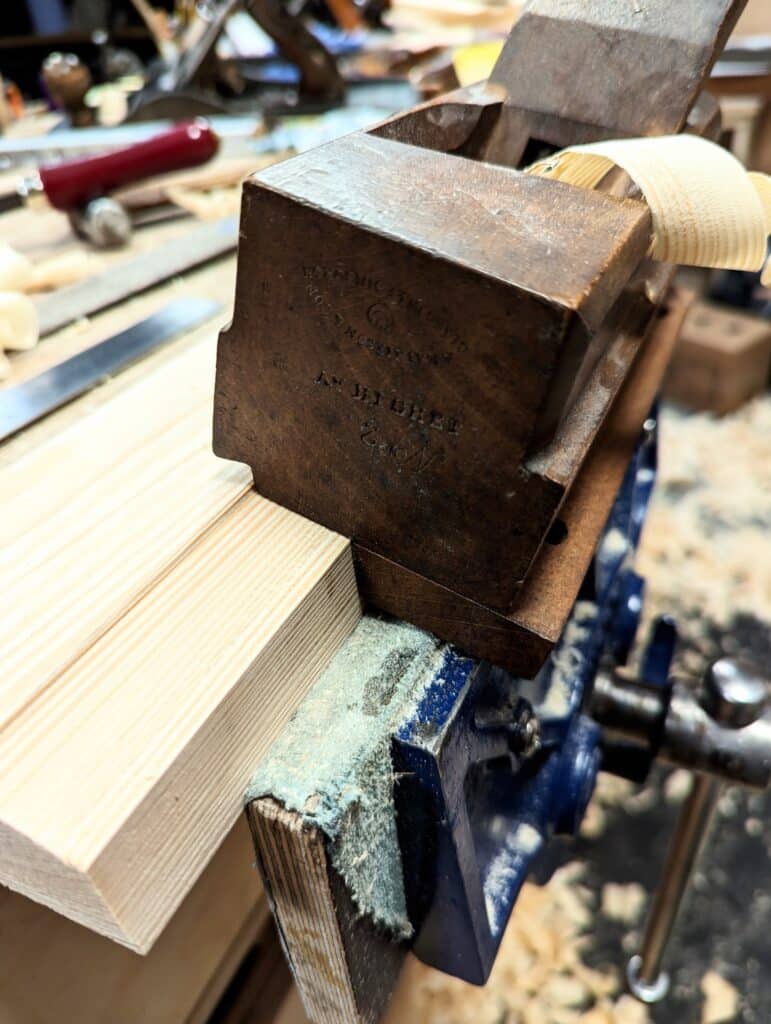
None of the other apprentices felt the way I did about woodworking being a craft. Somehow they didn’t stop to look at the tools and wood in the same way. They didn’t ask the same questions and I could tell that their minds lived only outside of work; they were always off elsewhere in their minds. How do I know? You can soon tell what others are interested in by their questions. “Did you watch . . .?” “Did you see . . . ?” “Did you go to . . .?” and so on. There wasn’t too much depth to any conversations we had even when we worked together for days side by side on a project or series of projects. My main interests outside of work were nature, rock climbing and spending time in the high places of the Pennine moorlands and crags, North Wales and Snowdon. But in the workshop, my mind raced from one idea in wood to another. Experiments I tried and others over me said would never work did; eventually, I learned to keep my ideas to myself and hid things in progress under the bench or in the woodracks somewhere as best I could. Back then, I tried different angles for sharpening planes and chisels. Why did everyone use two bevels and not one? Why not a macro camber instead of pernickety micro-bevels? Why grind a bevel once it’s established somewhere around 25 to 30º, and regrind it every six months if needed because the bevel crept to greater steepness and became too ‘thick’? Why not stay in maintenance mode for ten strokes on the coarse level of abrasion and never grind again? Why risk burning the steel? Why return to polishing the flat face once it’s flattened and polished out if it doesn’t degrade by wear? I never polish out this face and haven’t for decades. One quick pull on the strop breaks the wire edge from honing the bevel and off you go. We already jump through too many hoops because of legalists. Reshaping saw teeth from aggressive cut to more passive on rip or crosscut should take no more than four minutes per change. You change the impact of the cut according to the level of refinement you want. When you can’t afford a tool you either make it or adapt something to work for you. How many bandsaw blades have become my knives through the years? Or a scratch stock? A fine screwdriver? Maybe a flexing rule for scribing arches?
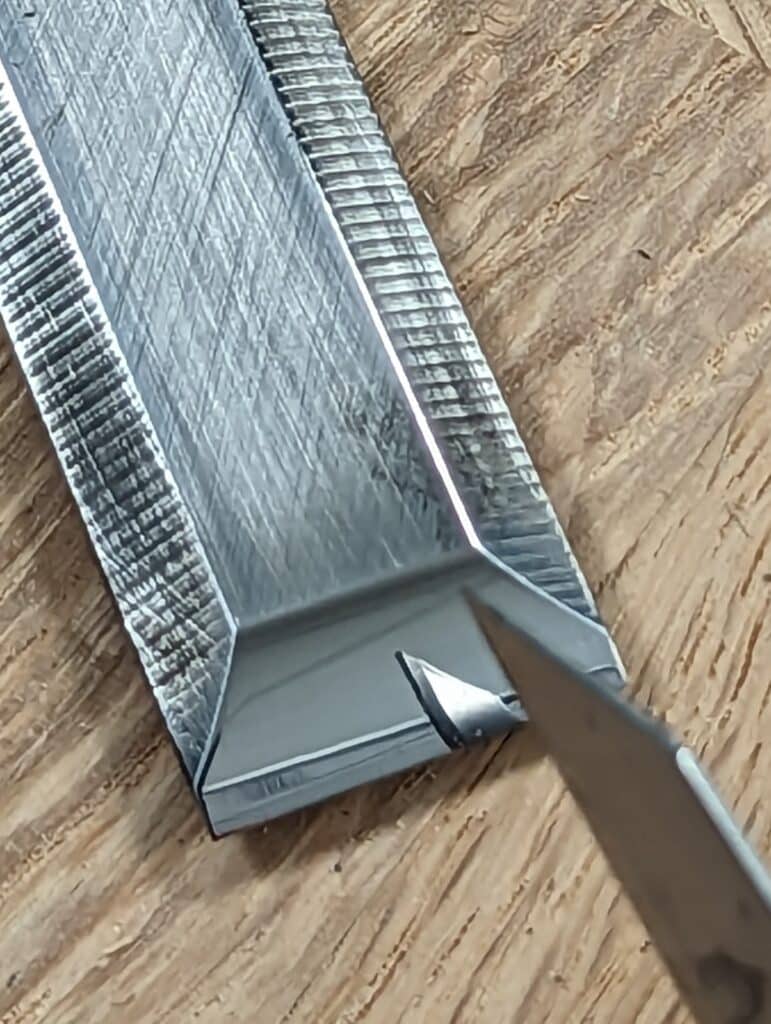
I knew that I lived a different, independent life in a sphere I never saw any other woodworker of my age and generation acknowledge to work and live in. My gathering of hand tools came hard. A week’s wage for one tool, occasionally two tools––perhaps a three-foot, four-fold Rabone folding rule that slid into a long leg pocket and a sliding bevel. I valued them more because they cost me but then, as I used them the more, I liked them too. Eventually, I started to hang them around the walls, especially rarer tools I garnered made by masters in the 1700s even, name-stamped by makers from 1750 and such. Somehow there seemed to me a deeper, more spiritual connection with the ancient makers I felt not to abandon. The handles and frames that formed the tools had a patina that took 200 and 300 years to infuse with the sweat and toil into the beech, ebony and rosewood, along with the steel that never once rusted because the oils from the same flesh and blood mix from wear and friction through daily work-frictions that kept them so. These textures caused deep, deep breaths in me and reached deeply into my soul. I knew work to give me deep meaning even though some of the men tried to trivialise its value in their chiding. They somehow enabled me you see, caused me to see and understand and then too to search for more, to look into the distance of past treasures; but it wasn’t by warmth and well-meaning. No. It was by their trivialising cynicism and mocking. Not every one of them but at least half of them. This I see now as a form of aggressive abuse. Even though they were good at possessing and owning their craft, they undermined work ethic and the quality work should, does and can bring to a young person’s life. Inciting disaffection for your job, the people you work for can be delivered in an undercurrent of bitterness. When someone different starts working they often become the target of the disaffected wallowing in their own self-pity. I wanted to somehow trace the steps taken by generations of makers folding steel on anvils and slabbing trees one, two and three inches thick to make their planes from in three, four and five years’ time after air-drying. Such patient men of that age and that era defied speed and force, they worked within the limitations of human ability where the conveyor belts of life had yet to be invented. Through these tools, I identified people by the tools they made and used. Some of my tools now have become more collector pieces. I like having them, touching them, dwelling on them and what they meant to the men who relied on them to provide for their families. They built longevity into them. Gave them names like the ‘Ultimatum Brace‘.
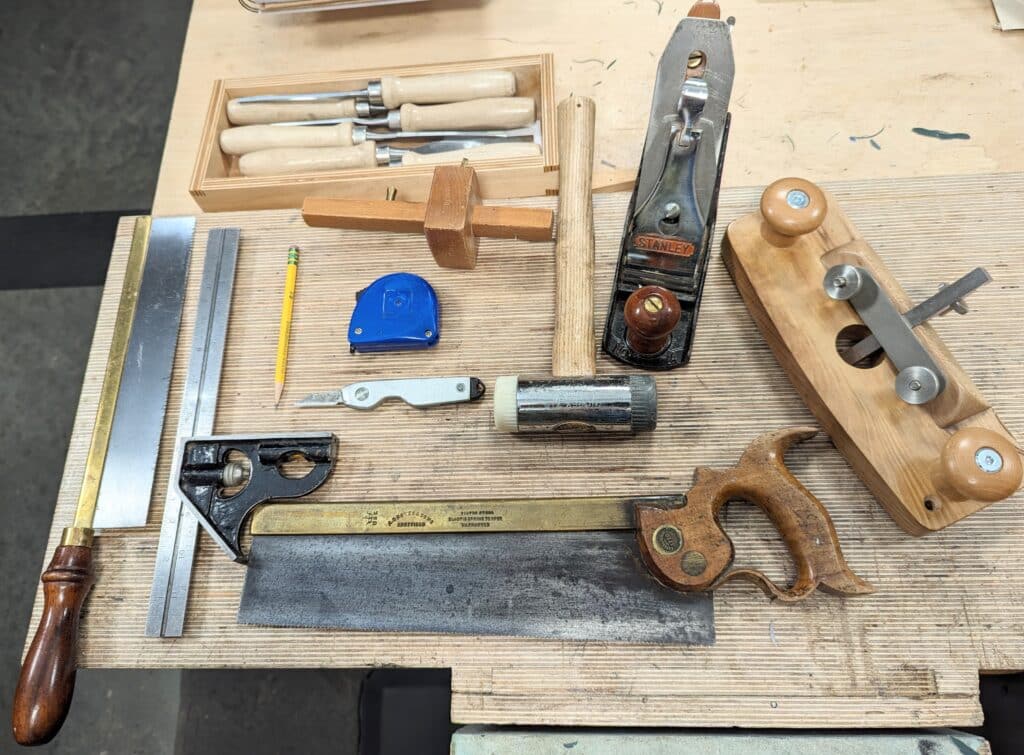
The tools I really relied on through the decades can be counted on two hands. They are special to me by their service to me and not by any particular maker’s name. Most of them have served me for the past 60 years. How can you not value them? Yes, I relied on to work and create with but now, as I consider these tools and the daily use of them for so long a time, I try to think of anything else that I own that had lasted that long in the using and the working of them and nothing can compare. Value by service is not something manufacturers really want. The Stanley utility knife and the safety razor were designed to dispense with skills to sharpen but more than that they wanted you coming back month on month for new blade packs.
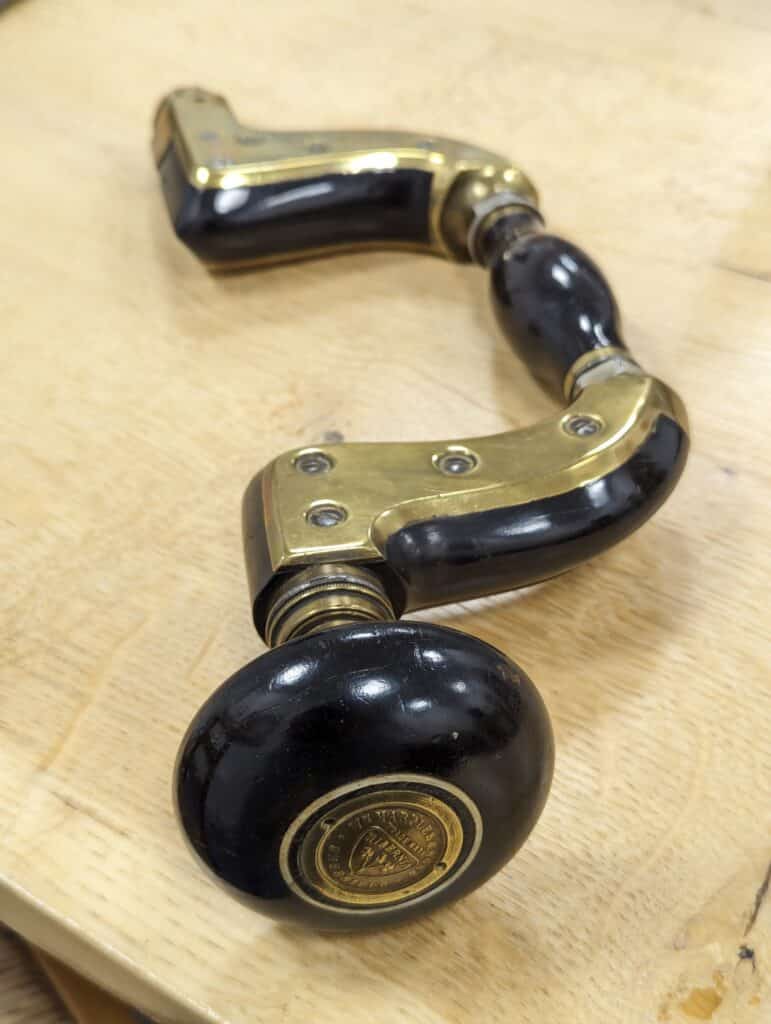
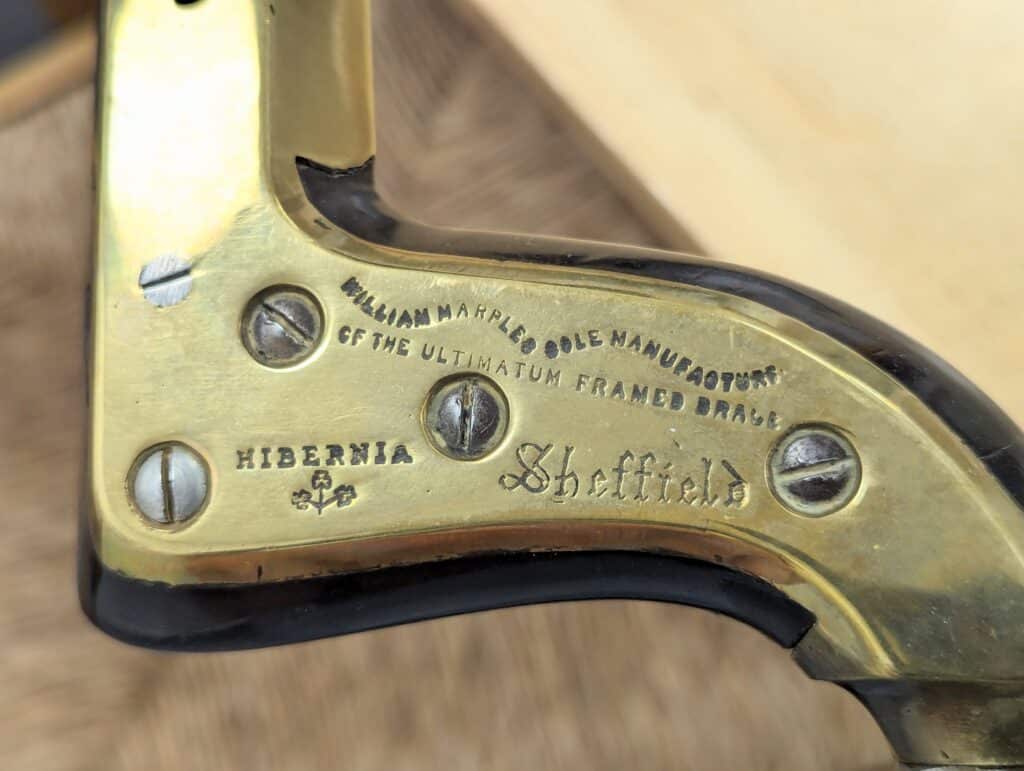
I owned a pristine set of ancient mortise chisels massive hammer-forged ed steel versions the like of which will never be made that way again. I encased them in a shadow box frame knowing that I nor any other would ever use these again. After two years in the US, I sold them at auction for $300. The mallet to drive them would need to be a sledge-sized hammer. Think of Newton’s three laws. The laws are: (1) Every object moves in a straight line unless acted upon by a force. (2) The acceleration of an object is directly proportional to the net force exerted and inversely proportional to the object’s mass. (3) For every action, there is an equal and opposite reaction. I have yet to find a mortise that could not be chopped perfectly with a bevel-edged chisel weighting at a third the weight of these. I understand: Some people need a plane the weight of a rod grader and others, myself, just need a lightweight Stanley or record. For the making of heavy bank doors as in times past and such I am sure they would work as a necessity for 4″ deep double and twin mortises for 18″ wide door rails. Those days are gone and will never return. A chain mortiser will do the work in minutes and no more than 30 seconds per pocket. I’m still using the Aldi chisels I bought twelve years ago for £10 of four. The steel is the best yet and the hornbeam handle is the best match too. There is no reason for me to change; I can readily chop four-inch deep mortises in any wood you care to name with no problem though I rarely need to.

It’s funny looking back on my life living long-term on two continents. What qualifies me is not who I made pieces for, where I made them and how much I got paid. Mostly it’s lifestyle that deserves recognition. Lifestyle is a twenty-four-seven occupation for someone like me where lifestyle becomes established as an all-inclusive everything. It’s where life slips seamlessly from writing to drawing and drawing to photography and filming videos around a benchful of hand tools to make the dream in your mind stand three-dimensionally in your days as you are living the calling of your life. But this is not as some might call it, ‘living the dream’ so much as answering your calling and finding true peace in it. Living the dream seems to me at least perhaps a little happenstance rather than intentional choosing and then engineering your life path. In my world, what you are doing is living through all the trials and tribs of being self-employed when all around you are earning four times as much as you, driving an oversized car, starting work around nine and finishing at five with an hour-long lunch sandwiched between 9 to 5. Your friends and acquaintances eventually feel confident in advising you with a few home truths you need to hear. It’s done with the best of intentions so you can be, well, just like them. The question? “When are you going to get a real job, Paul?” Their world, after all, will be better than your nip-and-tuck life of uncertainty and risk. Their world, in their eyes at least, is much better. Slipping into a large black Audi at 7 a.m. taking to the highway and leaving suburbia for the city on a two-hour commute, fully suited, neatly tight tie in place, slicked shoes. “Work smart, not hard!” or “Why sweat in this Texas heat when you can have an air-conditioned space to be in for the day?” These are the ones that shower to go to work whereas we shower before moving too much around the house after a day’s working. But conveyor belts have never appealed to me and whereas my life would definitely not be for everyone, what they thought to be better for me could never give me the risk of living my lifestyle living more for the unknown. It can never compare to crossing five gravel river bottoms in a 1951, one-ton Dodge flatbed to harvest and load up three or four mesquite stems and branches cut and not yet knowing if the two-ton load will need to be winched out from the river when you are two feet deep in the shallows. So, question! Real job or real living? It’s different for everyone. Getting off the conveyor belt involves choices that can be controversial for us all. Things can often seem brave. The instance of super-gluing your hands to roads and railings can be an activist’s way of finding a more radical way whereas there might be a thousand more productive radicals planting crops and harvesting food in season or gathering wood and making for life.
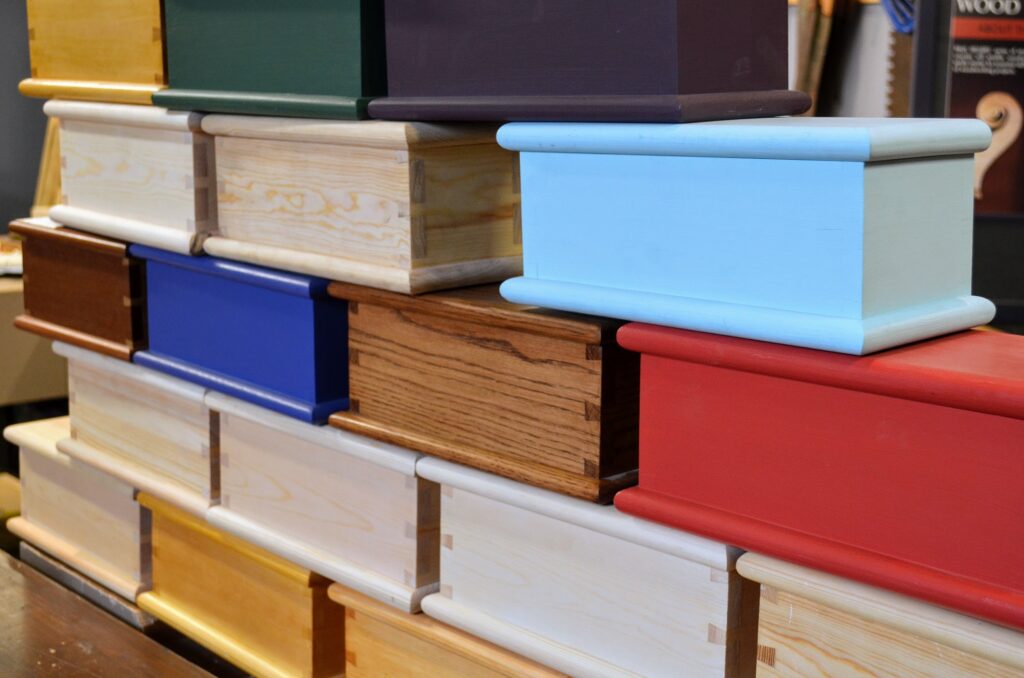
In the early days of arriving to live and work in the USA, travelling to shows was rarely done with much if any money in the bank. Most likely it was faith that you would sell all of your unbought stock in a rented U-haul trailer pulled by a very old and overworked Subaru estate with a chained-on tow bar. In tandem with the uncertainty was an excitement that made life work, albeit precariously: travelling in the dark to save a night’s hotel cost and three children soundly sleeping in the wayback was the reality of my living and being an artisan. The show would open at 9 a.m. By 6 a.m. we’d arrive with hope and the buzz of the showground while the kids slept in the back. Unloading stock, my bankroll, and setting up took two hours. Breakfast on the hoof worked. Hopefully, sales would produce enough income to book the hotel for tonight. The show was popular, with over 300,000 attendees over two and half days, so we mightn’t get a local hotel because they were often fully booked weeks and months ahead. By the end of the show, we would often have enough income to live for three months, even if it rained the whole weekend. This is the real risk of work and not some philosophical thought by an academic cushioned by secure income.
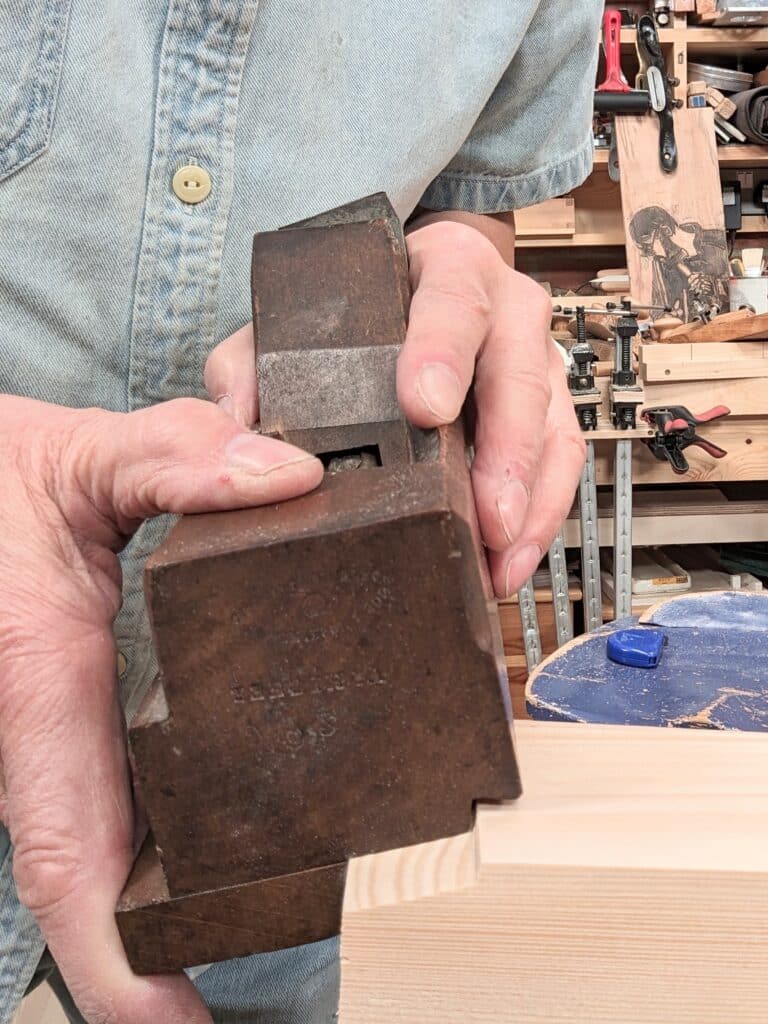
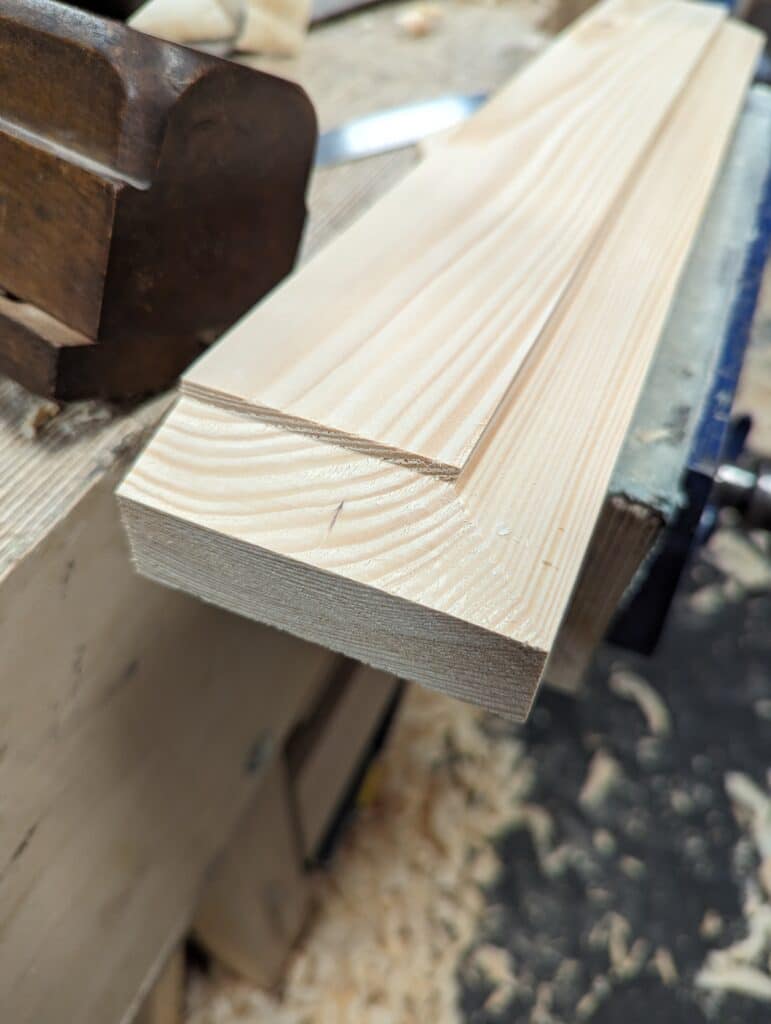
The offers of work elsewhere sometimes tempted me from time to time. But to do that, I would have needed to give up my striving and struggling for a lifestyle of my making in my own place, at my own pace and in a space designed by me for me. And then too, leaving my family for ten hours a day on a continuous basis through their foundational years as well as letting life soften my outlook and experience was a non-negotiable. The unchallenge of my being employed was never really much of an option for me. I believed life should cost me in positive ways. By positive ways, I mean really taking charge of everything I was responsible for from my children to work. I had made mistakes and had to face the consequences of them at different points. But I did that and found release and freedom from it. My next book describes the life I’ve lived in much greater detail: that’s if I ever finish it. It’s not so important a book but I hope that it will fill in some of the gaps my current work overshadows. There was one time when work seemed to have dried up, I took a phone call from Houston asking if I could design and make a prototype walking cane and that led to an order for 100 walking canes for the university’s alumni. They were giving them as some kind of recognition from the University. Priced at $86 apiece the order was given and I made. With half-inch sterling silver medallion insets installed in the handles, the outcome was financial security ever the winter months when selling usually dried up but stock-making for Springtime increased.
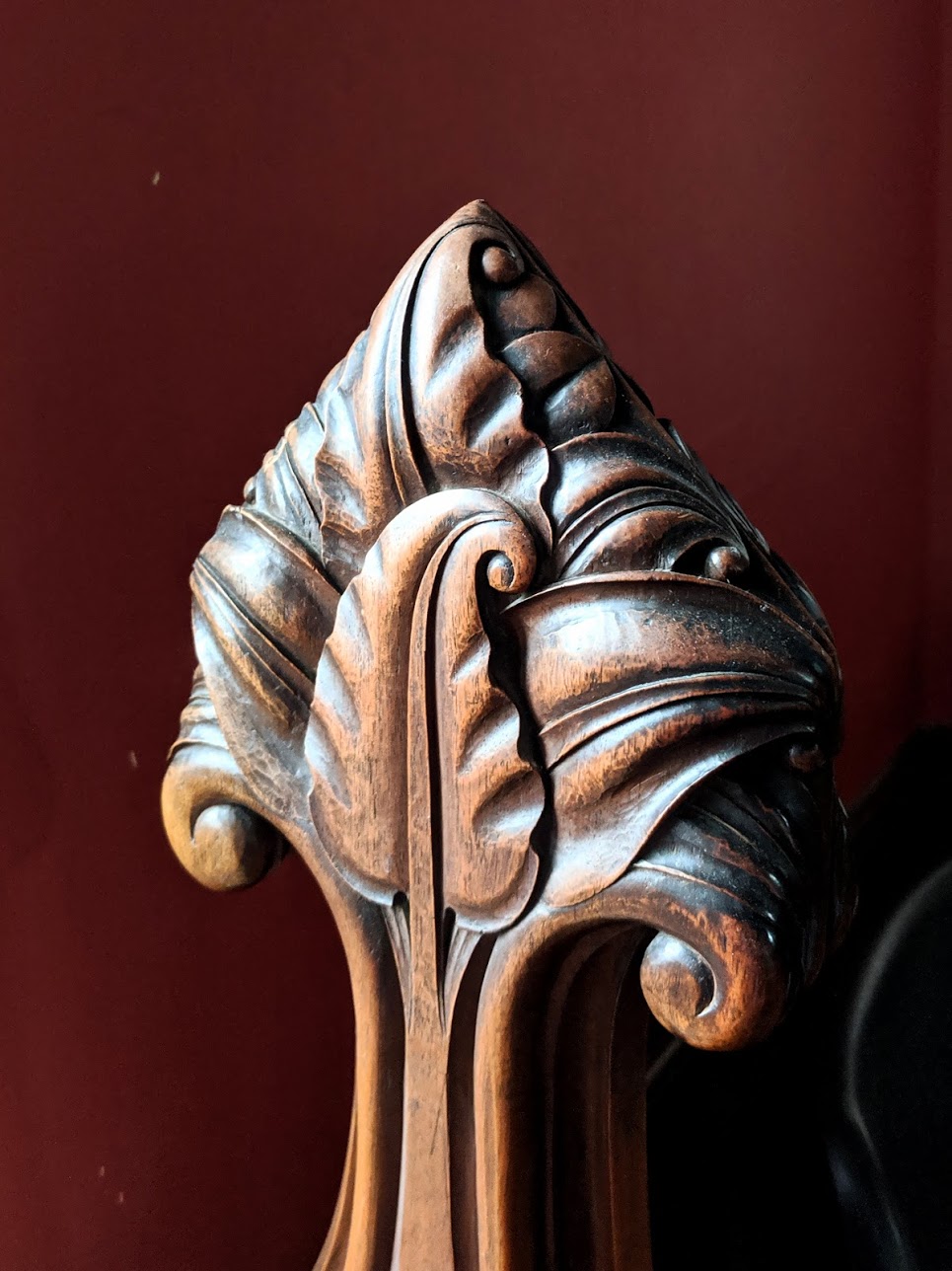
One aspect of my life is something we might today call DIY but it’s not the weekend version but a whole life. My trip to get my hands surgically fixed a month ago was in many ways doing it myself until the last minute and then a couple of hours later I was doing it myself again. This lifestyle of which I speak is not, cannot be for everyone and no one should ever feel inadequate because they responsibly went through life differently. My wanting off the conveyor belt affected many people I love and care for and then too friends who watched from the outside and at a distance. Had I had to work for others then I am sure weekends would have been in pursuit of my love of manual work. I am sure this would have compensated richly. I do ride a bike for some form of exercise but this is to take care of what my current manual work skips. Two years ago I had some cartilage issues in my left leg that came on suddenly. The medics told me many things with the possibility of a new plastic replacement knee. I decided that this wasn’t at present a viable option for me. The bike riding was at first the trial and then the answer. I had always ridden a bike but more for the simplicity it gave me and not really an essential. Gradually, I built up muscle and in two weeks my knee pain (that had left me relying on occasionally using a walking cane) was bettered greatly and within six weeks I was pain-free and back to my usual tricks again. Today I have no such pain anywhere near my legs or indeed anywhere else in my body. Forty years ago the prognosis I got for a disease I had was that I had a short life ahead of me, 18 months or so, and the disease itself was and still is incurable. Mine’s gone. I changed my diet and made it an active part of my lifestyle.
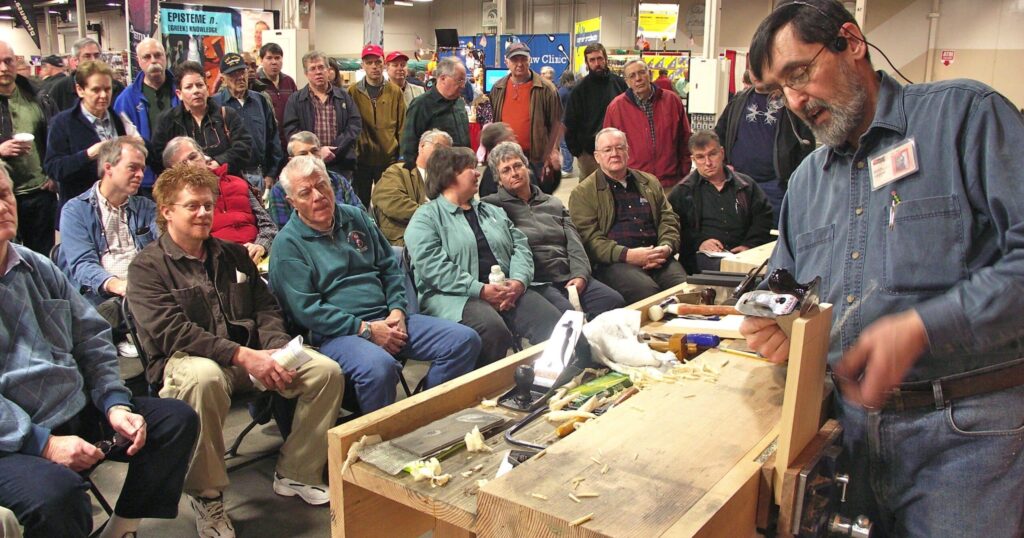
I am no longer isolated and on my own. Perseverance produces character and not only in our own lives but the lives of others we associate with be that near to or at a distance. The wonderful thing about establishing skill is the very fact that it takes perseverance and why would we need perseverance if there weren’t going to be points of difficulty and struggle along the way? Perseverance will produce character, of that there is no doubt, but additionally, mastering any craft will by necessity always produce patience.
Now it is time to continue making Christmas presents. I just ate a nice mince pie and had some coffee. There are dovetails to cut and the wood is still in sizes too big. A toy and a box or two takes time but it’s something I would like to continue forever.


I’m waiting patiently (mostly) for those around me to see the values and virtues of the life you describe. I have a feeling it will come, and it will come quickly for most people in the world, soon. I feel that we’re at a crossroads where people will begin to see the ridiculousness of our condition and it’s ever greater follies (it might be the one good thing to come of AI!). I’m trying to slowly imbibe those around me by continually making things (they don’t want) and fixing things and not buying new things (secondhand hand tools don’t count!). The latest “wood sample” to arrive, ordered by my wife, by some large furniture company (their pictures hide the industrial production) for a sideboard suggest that I’ve got quite a bit more waiting to do. I can build a sideboard, of course, but it wouldn’t fit whatever the required fashion of the moment is. The last one pretty much fell apart (IKEA, I’m sure I could fix it if I was interested) in under 6 years. It took me three (maybe four) decades to realise that my work was an unfilling cog ina (destructive) machine that was entirely meaningless, and I think it’s a realisation that people need to get to on their own, so I don’t say anything (well, not too often!). I just wait. It’ll happen, I’, certain. Perhaps it happens to us all. I’m absolutely delighted that Paul was mature enough to draw that conclusion at such a young age when others derided and chose to take the “serious” work path instead. It offers hope.
Thanks,
Rico
I had an interesting conversation about 5 years ago with a colleague at work. He was about 40 and had retaken up the saxaphone (playing in a local band once a month and practicing daily). I was curious about why he took it up again and the drive he had 5 years on since he had restarting. He basically said he didn’t want to blink and have 20 years go by with nothing to show for it. I could relate. Very easy to let the flow of work and family and obligations to take over without being mindful of what you want to do. Your choosing woodworking as your passion and job was a great way to accomplish both.
It is this kind of anecdotal insight that makes Paul invaluable:
“When the electric grinders came in with a six inch wheel you had to, had to, create a secondary bevel because of the radius of the hollow which was not a viable edge…”
Ah, of course!
There are many experts who advise creating a secondary bevel. But, none other than Paul who apparently understand the original need.
Paul is a human treasure.
Your sentimentality and the sharing of it reaches deep into my soul. Time goes by as I read your post and suddenly I find myself coming to as if I was asleep. In reality your prose put me into a day dream state thinking about the many fond memories growing up and the joy in the journey of wood working. Thank you.
Thanks for all you do to make the craft accessible to young people, your picture of the essential hand tools needed to succeed is truly worth a thousand words.
life is definitely what you make it. my life started with a run of lows that continued into my 30’s. even with all the setbacks incurred by such a rough start, i did end up in a career within hospitality and became a general manager for a large chain of business hotels. however, my fragile mental health from life caught up with me and i had a major breakdown from working a minimum of 70 to 100 hours a week. during my recovery period i decided that woodworking, which is something i always had an interest in was a path worth pursuing. i found a gaffer who was willing to train me and took to it like a duck to water. the joy of creating a tangible product, not an experience was so rewarding. i set up a small workshop in my garage at home and made pieces on commission. i am now retired and though i loved hospitality and was very good at it, i would never trade the satisfaction i gained from the simplicity of turning wood into a piece of art.
interesting article!
thank you for sharing. 👍
I hope you can.
Good luck’
Paul, your simplicity in all things you do, has always been amazing. Though I followed a way different path, my love for old tools has not wained. I still use them just to feel the ‘sprit’ of it’s original owner. There is nothing like using a vintage 100yr old, sharp hand plane on a piece of wood, in the cutting and the after feel of the wood.
Long life to you Sir!
Test
I would love for you to complete that next book. I’ve ready every blog post since the beginning in 2012 and my favorite ones by far are the tales of your apprenticeship and George. I would buy that book.
Would one cut the raised panel from start to finish with that plane, or could a portion of the waste be removed with a scrub or jack plane before employing the panel raiser?
Does it matter?
Ah, I’ve been in the Cabinet Room and have seen your work!
I’m working on a chest of drawers and about to give half-blind dovetails another go. Thank you for the good instructional videos.
Merry Christmas Mr. Sellers. You are an inspiration. May your 2024 be full of peace, prosperity, good health and filled with the joy of continuous discovery and the journey to master new skills. Cheers.
“answering your calling and finding true peace in it” Is there any other way to live your life?
Wow Paul, that is quite an article. Yes, it sounds like a another book is warranted!
Also good to read that you were a climber! Something else we have in common! 😀 I too spent quite a bit of time in Snowdonia and the Peaks climbing (and elsewhere). As well as living in the USA for many years, and starting a family there, and having diabetes and cycling! But my path, of course, has been considerably different to yours. Although I had my own company for a year, I have essentially always been a “wage slave” 🙁 . But were you in my generation (I was born a couple of years before you started your apprenticeship), I suspect our paths might have been much closer. 😉 e.g. regrettably at school we had all machines for craft subjects like woodworking ( unnecessarily, as my old woodwork teacher knew hand tools as he had taught both my father and brother woodworking using hand tools!).
I hope you can.
Good luck.
Paul,
I used to have a table saw, router, router table and all the blades and router bits and table saw attachments that I needed to work on my old house. Then one day I saw you at a woodworking show in New Jersey. I watched you sharpen a chisel; in under a minute you were done. I was hooked. After watching your YouTube videos and learning you were starting Masterclass online I promptly signed up, sold all my power tools and bought hand tools. I started to learn how to use them. I experienced lots of setbacks. Lots of failures. How will I learn this? So many things got in the way but I didn’t give up. Soon a small success. Then another and another. Now I love the peace and simplicity of hand work.
Thanks Paul. I love your story and look forward to much more.
John
Wow! My one and only time in New Jersey, John2010 or 2011 I think. A lot’s happened since then. Thanks for this. I appreciate it.
I have it easy! My partner through more than a decade is constantly astounded and delighted by what I make. I’m an amateur, I love what I do, and I have so much to learn. My workshop is my playground, my safe space, a place I can breath freely (sometimes with a dust mask!). So I mostly use hand tools, of course. My only machines are a pillar drill, a small and silent compressor with a couple of tools, a few of hand drills, and hopefully soon a lathe.